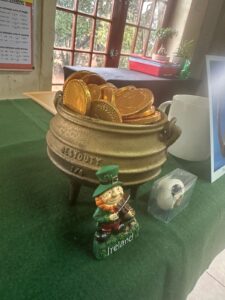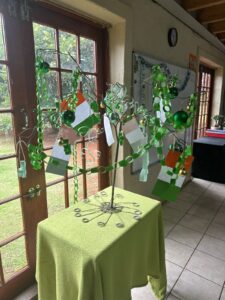I truly believe that at the heart of Maria Montessori’s vision lies the idea of cultivating global citizens – individuals who possess not only academic interest in the world around them but also empathy, cultural understanding, and a sense of interconnectedness with fellow humans.
In 1990, Bishop used the analogy of mirrors, windows and glass sliding doors as a way to reflect the “multicultural nature of the world” with specific reference to books and their authors (Potter, 2019). Using this analogy, I believe that we can use celebrations as learning opportunities to reflect not only our own identities, but also to glimpse at how others enjoy festivals and celebrations in their worlds and walk through the sliding door by immersing ourselves in the ways in which we and others celebrate life.
The ways in which cultural celebrations can be introduced to children vary. Some will be real life experiences that can be shared as a collective (for example: in a class of Christian children, the story of Christmas holds special significance). Some celebrations may require a special guest to come and speak to the children share their special day’s meaning and importance. At our school, the Jewish holiday of Tu B’Shevat in February offered our children not only an opportunity to learn about the customs of a classmate, but also merged with our study of botany and the revisiting of the Northern/Southern Hemisphere seasons as we are going into autumn rather than spring which is a significant aspect to the holiday.
In March, our senior primary class decided to host a St. Patrick’s Day celebration to which they invited the junior primary, preschool and even toddler classes. They decorated our ‘celebration tree’, prepared songs, told the group about leprechauns, the pot of gold at the end of the rainbow and shamrocks (they left the banshee story for ‘just them’ as it was ‘not suitable’ for the younger children!), and made green jelly as a treat for the little ones to take with them when they went back to their classes. This involvement in community was a delightful opportunity to be together and have fun.


We encourage our children to explore, understand, and appreciate diverse traditions from Ramadan and Eid al-Fitr to Lunar New Year and World Ocean’s Day. Each celebration offers a window into different cultures and our global connectedness. It fosters curiosity and mutual respect among students and provides a glimpse into the world beyond their classroom walls. By weaving celebrations into the fabric of the curriculum, Montessori schools can instil a deep appreciation and respect for diversity and a sense of belonging to a global community. In doing so, they lay the foundation for a future generation of compassionate, open-minded, and culturally competent citizens of the world.
– Heidi van Staden –
March 2023
Reference:
Potter, C. (2019) Windows and mirrors and sliding glass doors: ensuring students see themselves and others in literature [online] available at: https://humaneeducation.org/windows-and-mirrors-and-sliding-glass-doors-ensuring-students-see-themselves-and-others-in-literature/ (date accessed: 14.03.2024)



